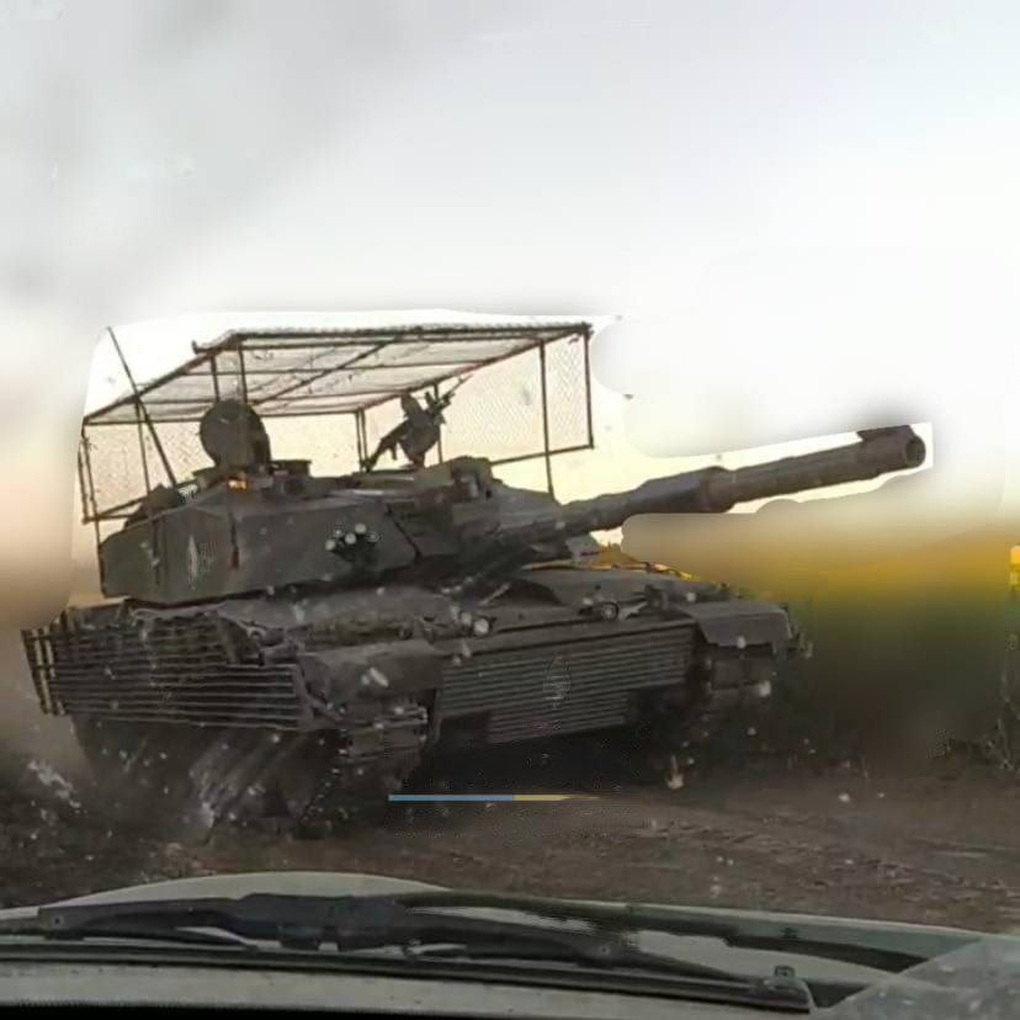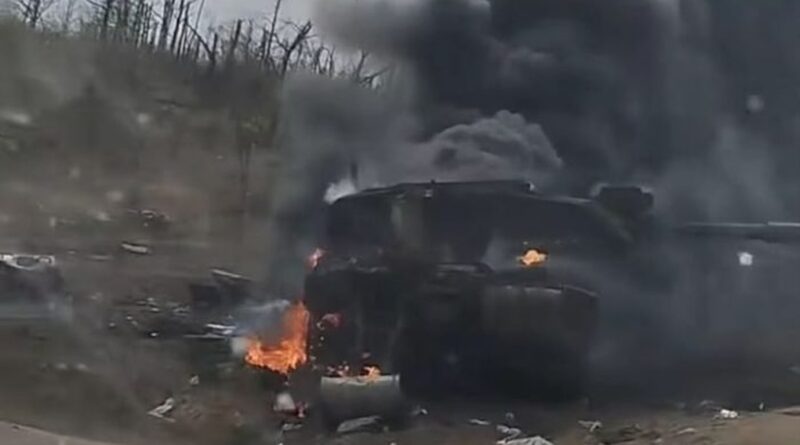How was the `invincible` Challenger 2 tank destroyed in Ukraine?
(Dan Tri) – The Ukrainian battlefield in the past few days once again witnessed the legend of the West’s `invincible weapon`, the Challenger 2 tank, being destroyed on the outskirts of Robotine village, Zaporizhia region.
The first Ukrainian Challenger 2 tank was destroyed (Photo: Telegram).
The news that Ukraine’s first Challenger 2 tanks were defeated has received great attention from Russian military experts.
Let’s find answers to the questions about what kind of weapon destroyed this heavy tank, the legend of how the Chobham armor `melted` and why it is considered by military and intelligence experts.
`Private path` of the British
The latest article in the Russian newspaper Vzglyas (Perspective) helps explain why the Challenger 2 tank has received a lot of attention not only from the media, but also from Russian military experts.
The first is the `invincible` reputation since its appearance until now.
However, that is quite understandable because up to now, the battles Challenger 2 has participated in have only been to deal with opponents below their level, not even able to resist.
Britain announced that it would provide Ukraine with 14 Challenger 2 tanks in January and this number will be increased to 28 vehicles, corresponding to 2 tank companies according to NATO standards.
When receiving the first batch of British tanks in March, Ukrainian Defense Minister at that time, Mr. Oleksiy Reznikov, highly appreciated the British tank and considered it to be one of the nuclei of the Kiev summer counteroffensive.
`It’s a pleasure to see the first Ukrainian Challenger 2s… These wonderful vehicles will soon go into battle and begin their mission,` said Oleksiy Reznikov.
All of these modern tanks as aid were transferred to Ukraine’s elite 82nd Airborne Brigade.
However, by August, although Ukraine had not yet penetrated the first line, Forbes journalist David Ax said: `Ukraine finally deployed its strongest unit to the front, Brigade 82 with about 2,000 people.`
Ukraine’s counterattack is still in the gray zone, south of Robotine village and has not yet reached Russia’s first main line of defense.
Russian military expert Igor Korochenko, Editor-in-Chief of Fatherland Power Magazine, assessed that many military analysts once considered the British tank development philosophy to be conservative and lacking in logic.
Going against the general trend of world tanks being highly mobile, having strong firepower and being the main means of destroying tanks, the UK chose to develop tanks that require strong protection and special thinking.
The British goal was to create a vehicle with high survivability and strong firepower to mainly destroy enemy armored vehicles at the farthest distance possible.
High-explosive plastic warhead (HESH) bullets have proven that with the ability to destroy targets at a distance of up to 8km.

Ukraine’s Challenger 2 tank is fitted with an anti-suicide UAV canopy (Photo: Telegram).
Prioritize protection
`The feature clearly expressed in the design of the British Chieftain and Challenger tanks is to maximize protection,` expert Igor Korochenko assessed.
Right from the generation of Chieftain tanks – the first main battle tanks of the British Army, the amount of armor protection on the total vehicle weight reached 53%, while this number is average on current tanks.
The trend of developing British tank protection was also raised to a new level with Chobham complex armor technology after the bitter lessons of the Chieftain tank before the T-72 tank version using the 125mm cannon made by Iraq.
Chobham is said to be effective against anti-tank ammunition by suppressing the jet penetration through the honeycomb structure of the ceramic lining and reducing the effectiveness of kinetic energy penetrators as the material layers absorb the penetration force and
Military news website Topwar evaluates that Chobham armor technology is very valuable academically in the development and manufacture of modern tanks.
According to Topwar’s assessment, the first Challenger 2 destroyed in Ukraine, based on images of the scene, was likely hit by highly accurate guided artillery shells such as Kranopol or Kitolov while in a gathering position preparing for combat.
In addition, British tanks can also be hit by Russian Kornet anti-tank missiles.
Change or be destroyed?
Also according to the assessment of the Russian news site Vz, a significant difference between Western and Russian combat vehicles used on the Ukrainian battlefield is that Russian motor vehicles are constantly modified to suit the situation.
Depending on each front, Russian Army vehicles are equipped with necessary `accessories` to improve survivability.
It is not difficult to recognize these changes in the vehicle’s roof cover against suicide UAVs, anti-tank missiles or the Nakhitka fabric system that limits the exposure of heat signals, grenade-propelled bulletproof cages… on the vehicles of the United States.
As for the Ukrainian side, in addition to the self-created modifications of the units on the battlefield, their tanks and armored vehicles mostly retain the basic configuration of the manufacturer.
Explaining this problem, Topwar news site posted that any changes that interfere with the design of Western vehicles without the consent of the manufacturer will be opposed and even refused to be implemented.
On the Russian side, since the Soviet era there has been a tradition of technical units of manufacturing factories following troops to the battlefield.
Therefore, additional equipment to effectively limit the enemy’s offensive weapons on the Russian front is often evaluated and standardized by factory engineers for production right on the front lines.
With the Challenger 2 defeated at the front, Russian military experts can soon access and study the special technologies of this British tank line.
